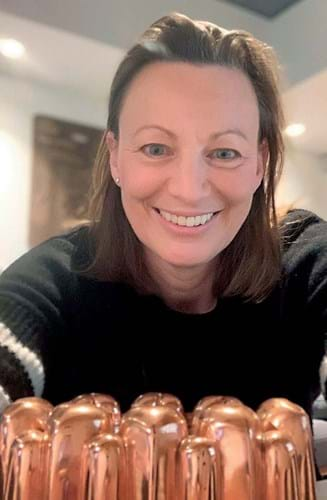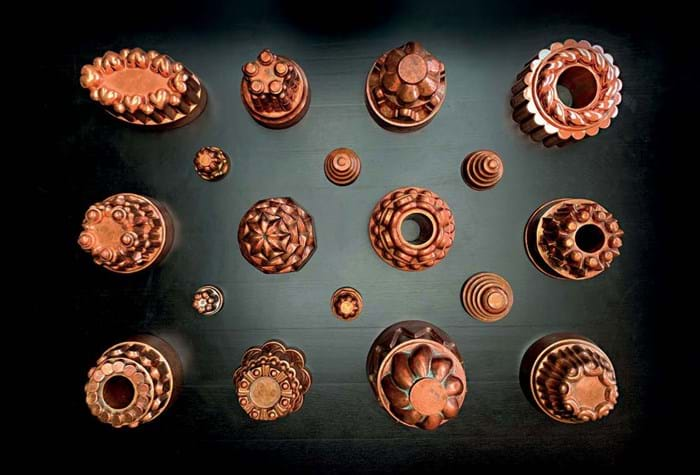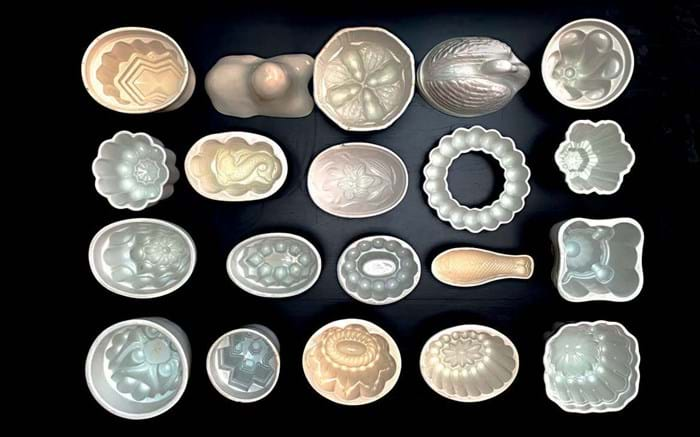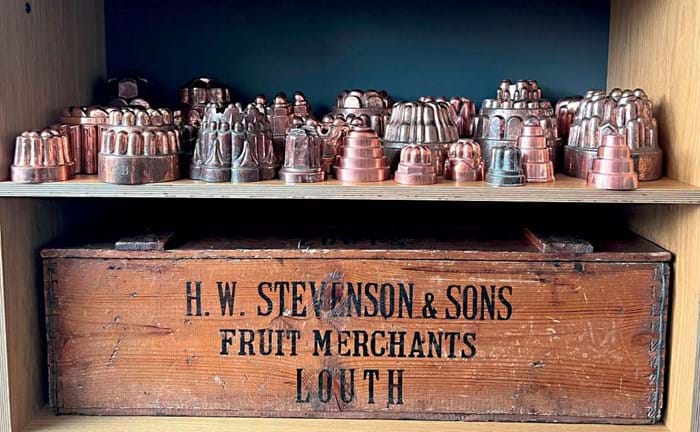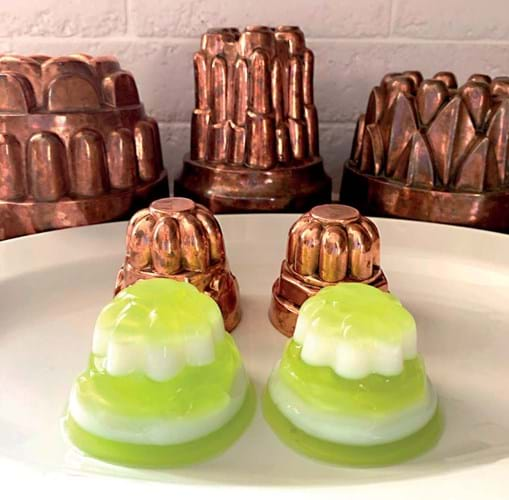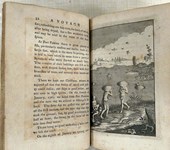In 2020, during lockdown, she set herself a challenge to put her antique jelly mould collection into action and make a jelly a day for a year. She posted her creations on her Instagram account @adventuresinjelly and now has more than 29,000 followers.
ATG: What drew you to collect jelly moulds?
Caroline Tremlett: I started back in 2005. I loved going into antique shops and decided I needed to collect something to give me a reason to go in. My husband bought me my first antique jelly mould and I’ve been hooked ever since. In 2008 I went on an amazing jelly-making course run by the food historian Ivan Day at his house in the Lake District – he has an amazing collection which we got to use!
What elements do you look for when considering a purchase?
If copper, they need to be in a usable condition with their tin lining intact, ideally with no dents. Ceramic moulds can be chipped or cracked so you need to be careful. Otherwise it’s by eye and usually I can tell if it’s going to make a really pretty jelly.
Where do you find items to buy?
My favourite shop is Appleby Antiques [applebyantiques.net] on Portobello Road (within Atlam where a number of dealers share the space). Appleby Antiques’ Sue and Mike Witts have an extraordinary knowledge of jelly moulds, I often email Sue for advice or help identifying a mould. Many antiques dealers are online now so it is easy to scour the internet for moulds. Ebay and Etsy are also good sources of course.
How would you classify your habit?
I am usually driven by something I can use. There are, of course, some rare antique jelly moulds that I covet but they are out of my price range. Examples would include the Alexandra Cross, the Brunswick Star or the Belgrave copper moulds. Or a rare ceramic Wedgwood mould such as the Cone mould. Large copper moulds are expensive but some of the ceramic moulds are much less and you can pick them up for about £15. I do get a thrill when a mould arrives. I love unwrapping them and working out what jelly I’m going to make. Antique copper moulds sometimes have initials stamped on them, for the owner of the house. This was so they were returned to the correct house when they went off to be retinned – DWL Duke of Wellington London would, for example, add considerable cost to a mould.
How large is your collection?
I’m ashamed to say I couldn’t put a number on it… somewhere in the region of 100-150 moulds.
Where do you display/keep your moulds?
I have copper on display in the kitchen and some of the ceramic moulds in the sitting room, otherwise they are in cupboards and drawers in the kitchen.
Do you buy vintage moulds as well as antique?
I buy mainly antique, but I do buy some vintage aluminium moulds which are fun. There is an array of modern food moulds and I do try to demonstrate a jelly in both an antique and a modern mould, the idea being to make the jellies accessible to everyone, as most people don’t have antique versions. A Nordic ware bundt tin also makes a fantastic jelly mould.
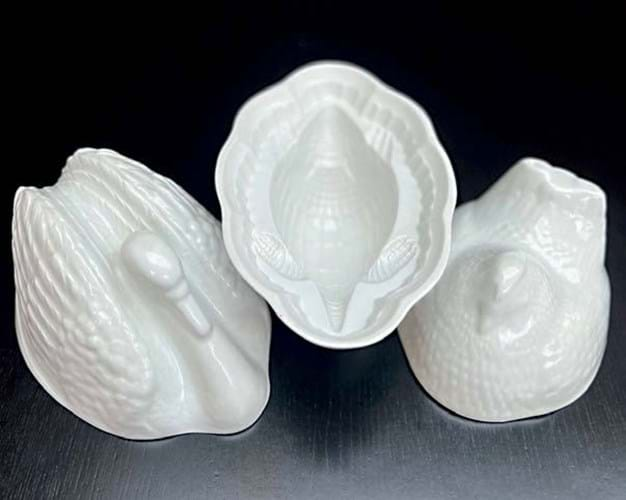
Details of three ceramic jelly moulds.
What is the most you have ever spent on an item for your collection?
In the world of antiques, the great thing is that jelly moulds don’t need to be expensive. I would say a large copper mould would be in the region of £300 – that’s about my limit on an individual mould.
But I understand the recent record at auction was £2000 [at Brighton & Hove Auctions] for a copper Benham & Froud mould in the shape of a turtle which is very rare. (See ATG No 2588.)
What advice would you give a new collector?
I would suggest starting with vintage aluminium moulds, readily available on the internet, inexpensive and easy to turn out. Treat yourself to one or two copper moulds. Keep practising on ceramic moulds as they are a devil to turn out and require a very different technique to copper and aluminium moulds – requiring lining the mould and using cold jelly mixes. See my website for how to do this (adventuresinjelly.com).
Tell us more about your ‘jelly a day’ challenge…
It all started in lockdown. I wasn’t commuting and thought it was a good opportunity to use my jelly mould collection and so ‘a jelly a day’ was born. I really was astonished at the interest it generated and it soon became clear that the slo-mo wobbles (videos of slowly wobbling brightly coloured jellies) were very popular. I get all sorts of lovely messages from people all over the world saying how much joy it brings them – I couldn’t ask for anything more! It has also been absolutely brilliant for my mental health and brought me a lot of pleasure. [See @adventuresinjelly]


